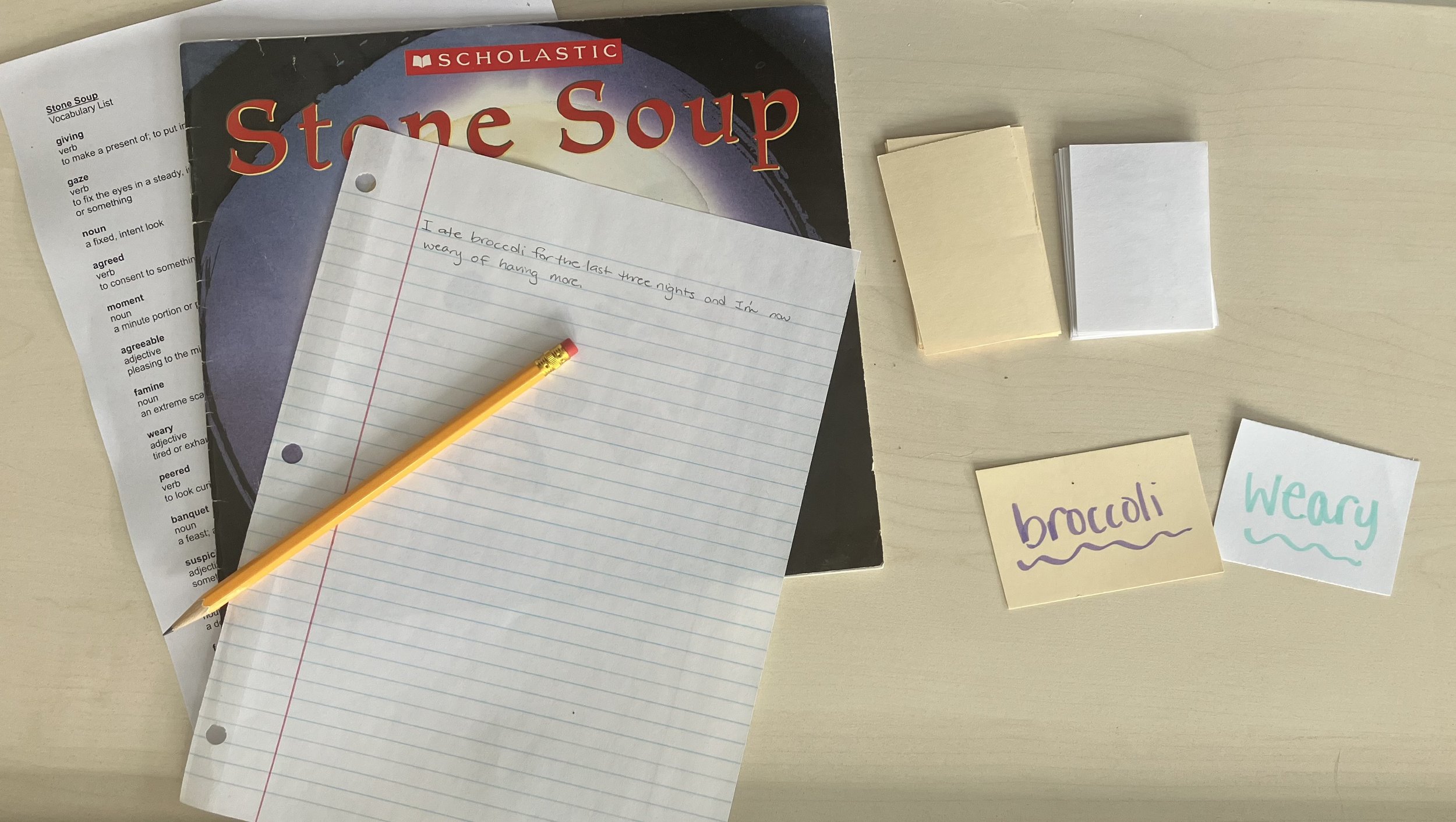Vocabulary Activity for Comprehension
Comprehension is more than recalling what was read. Some students can recall the words, but they may not understand them. Using and practicing vocabulary is key to develop an understanding of what was read.
As a tutor and Special Education teacher, I like to use interactive activities to practice vocabulary, and this activity is something that can be done in the first 5 minutes students arrive or in the last few minutes before students leave. I call it Silly Sentences and I encourage students to have fun with it.
With this activity I have prompts that are either on popsicle sticks in a jar or on cards. Students have a vocabulary list that includes the word, definition and part of speech, and students are encouraged to use their list during this activity. There is also a stack of cards with the vocabulary words. Students will pull a prompt, either card or stick, and a vocabulary word on their turn, then they will have to come up with a sentence that uses both the prompt and the vocabulary word correctly. Initially, students will need help on how to do this, and that support can fade as students catch on.
For this blog I again used the story Stone Soup by Jon Muth. I identified 11 vocabulary words and a phrase I wanted to focus on to help students have a deeper understanding of the story. I chose the words giving, gaze, agreed, moment, agreeable, famine, weary, peered, banquet, suspicious, curiosity and foot of the mountain. I made sure to use the words as they appeared in the text so students would work on tense and plurality in this activity.
Using vocabulary activities during tutoring will build students’ comprehension ability.
For my prompts, I used culturally relevant prompts as well as things students express an interest in. My prompts include: unicorn, smart watch, Legos, homework, Monopoly, book club, glasses, Cookie Monster, Ant Man, challenge and broccoli. So if a student pulls the cards broccoli and weary, they might come up with a sentence such as, “We have eaten broccoli every day this week and I am weary of eating more.”
What I like most about this activity is how students not only learn their vocabulary in a meaningful way, but they get to practice how to use it, and, bonus, they get a better understanding of parts of speech and sentence structure. I can make this activity more demanding by requiring students to write down their sentences. I can also adapt the activity for student teams, starter, warm up before reading, center activity, or an exit activity. Finally, I can challenge students by using either two prompts and a vocabulary word or a prompt and two vocabulary words in a sentence. There are many ways to adapt this activity to meet the needs of the students and the curriculum that is being taught.
Contact me to learn more about how I can help through a free consultation.


